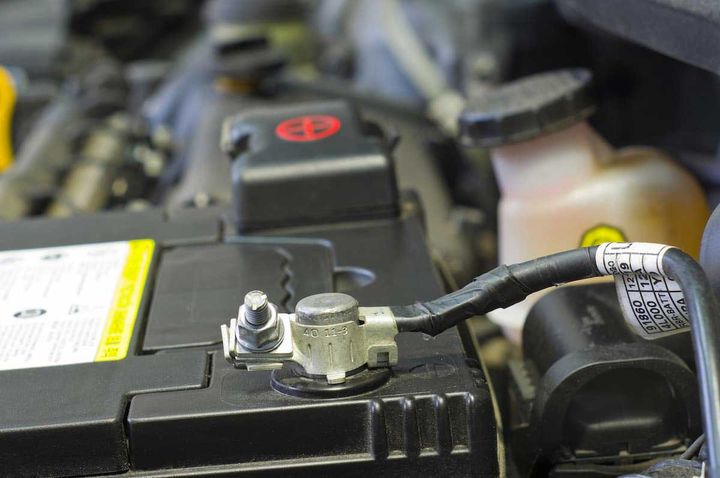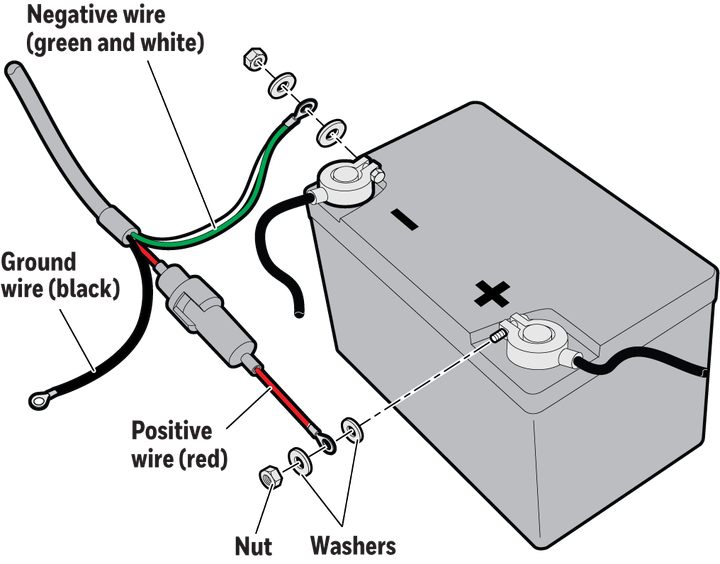


Proper battery terminal connection is crucial for ensuring the safe and efficient operation of any device or system that relies on battery power. Batteries are an essential component in various applications, ranging from automotive to portable electronics and backup power systems. Neglecting the importance of proper battery terminal connection can lead to numerous issues, including reduced performance, premature battery failure, and potential safety hazards.

Before we dive into the nitty-gritty of battery terminal connections, let's explore some of the common issues that can arise with your vehicle's battery:
| Issue | Description |
|---|---|
| Corrosion buildup | Corrosion on the battery terminals can prevent proper electrical contact, causing various electrical problems. |
| Loose or damaged cables | Loose or damaged battery cables can lead to intermittent power issues, making it difficult to diagnose the root cause. |
| Electrical accessories left on | Leaving electrical accessories on when the vehicle is not running can slowly drain the battery's charge over time. |
| Loose battery mounting | A loose battery mount can cause excessive vibration, leading to internal damage and cable wear. |
When a customer rolls into the shop with a battery-related concern, the first step is always a thorough inspection. Here's what I typically look for:
Visual inspection of the battery terminals and cables for signs of corrosion, damage, or looseness.
Checking if the battery is securely mounted and not excessively shaken.
Using a voltmeter to test the battery voltage and charging system.
| Inspection Step | Purpose |
|---|---|
| Visual check | Identify visible issues with terminals, cables, and battery mounting. |
| Battery mounting check | Ensure the battery is securely mounted to prevent vibration-related damage. |
| Voltmeter test | Diagnose potential issues with the battery voltage and charging system. |
Now, let's get to the heart of the matter: the correct order for disconnecting and reconnecting those battery terminals. Believe me, this is where things can go sideways if you're not careful.
Disconnecting the Negative Terminal
Always disconnect the negative (black) terminal first.
This step helps prevent accidental sparks or short circuits, which can damage your electrical system and pose a safety hazard.
Cleaning the Terminals
Use a wire brush or a dedicated battery terminal cleaner to remove any corrosion buildup.
Clean terminals ensure a solid electrical connection and prevent future issues.
Reconnecting the Positive Terminal
Reconnect the positive (red) terminal first.
This order is crucial to avoid potential electrical mishaps or sparks.
Reconnecting the Negative Terminal
After the positive terminal is securely connected, reconnect the negative terminal.
Tightening the Connections
Ensure that all terminals and cable connectors are tight and secure.
Loose connections can lead to intermittent power issues and potential damage.
| Step | Action |
|---|---|
| 1 | Disconnect the negative (black) terminal first. |
| 2 | Clean the terminals using a wire brush or dedicated cleaner. |
| 3 | Reconnect the positive (red) terminal. |
| 4 | Reconnect the negative terminal. |
| 5 | Tighten all connections securely. |
As with most things in life, an ounce of prevention is worth a pound of cure when it comes to battery maintenance. Here are some preventive measures you can take:

Regular cleaning of the battery terminals to prevent corrosion buildup.
Ensuring the battery is securely mounted to avoid vibration-induced damage.
Turning off electrical accessories when the vehicle is not running to prevent unnecessary battery drain.
Considering replacing an older battery before it fails completely.
| Preventive Measure | Benefit |
|---|---|
| Terminal cleaning | Prevents corrosion buildup and ensures proper electrical connection. |
| Secure battery mounting | Avoids vibration-related damage to the battery and cables. |
| Turning off accessories | Prevents unnecessary battery drain and extends battery life. |
| Proactive battery replacement | Avoids the hassle of a dead battery and potential electrical issues. |
Replacing a car battery can be a significant expense, with costs ranging from $50 to $300 or more, depending on the battery type and your vehicle. Professional installation may add an additional $20 to $100 to the total cost.
| Cost Factor | Typical Range |
|---|---|
| Battery replacement | $50 - $300+ |
| Professional installation | $20 - $100 |
While it might be tempting to try and squeeze a few more miles out of an aging battery, the potential costs of a failed battery – from towing fees to electrical system damage – can quickly outweigh the upfront expense of a replacement.
In the world of automotive mechanics, proper battery terminal connection might seem like a small detail, but it's one that can have a massive impact on your vehicle's overall health and performance. By following the correct procedures for disconnecting and reconnecting those terminals, you can not only ensure a safe working environment but also maximize the lifespan of your battery and avoid costly repairs down the line.
So, the next time you find yourself tinkering under the hood, remember the importance of getting the order right: disconnect the negative terminal first, clean the terminals, reconnect the positive terminal, then the negative, and ensure all connections are tight and secure. It's a simple process that can save you a whole lot of headaches and keep your ride running smoothly for years to come.
Battery terminal corrosion is typically caused by a chemical reaction between the battery acid and the metal terminals over time. Proper cleaning and maintenance can help prevent excessive corrosion buildup.
Look for any frayed or exposed wires, cracks in the insulation, or signs of melting or burning on the cable insulation. Damaged cables should be replaced immediately.
Leaving electrical accessories on when the vehicle is not running can drain the battery's charge over time, potentially leading to a dead battery.
It's generally recommended to clean your battery terminals at least once a year or whenever you notice signs of corrosion buildup.
Yes, a loose battery mount can cause excessive vibration, which can lead to internal damage to the battery and wear on the cables over time.
You'll typically need a wrench or socket set to loosen and tighten the battery terminal connections, as well as a wire brush or dedicated cleaner for cleaning the terminals.
If your battery is more than 3-5 years old, it's generally recommended to have it tested and consider replacing it proactively to avoid potential issues and breakdowns.
No, it's crucial to follow the proper order of disconnecting the negative terminal first and reconnecting the positive terminal first to avoid potential electrical mishaps or sparks.
Common signs of a failing battery include slow engine cranking, dimming headlights, electrical accessory issues, and the need for frequent jump starts.
The cost of a new car battery can range from $50 to $300 or more, depending on the battery type and your vehicle. Professional installation may add an additional $20 to $100 to the total cost.

Sarah isn't your average gearhead. With a double major in Mechanical Engineering and Automotive Technology, she dived straight into the world of car repair. After 15 years of turning wrenches at dealerships and independent shops, Sarah joined MICDOT to share her expertise and passion for making cars run like new. Her in-depth knowledge and knack for explaining complex issues in simple terms make her a valuable asset to our team.



